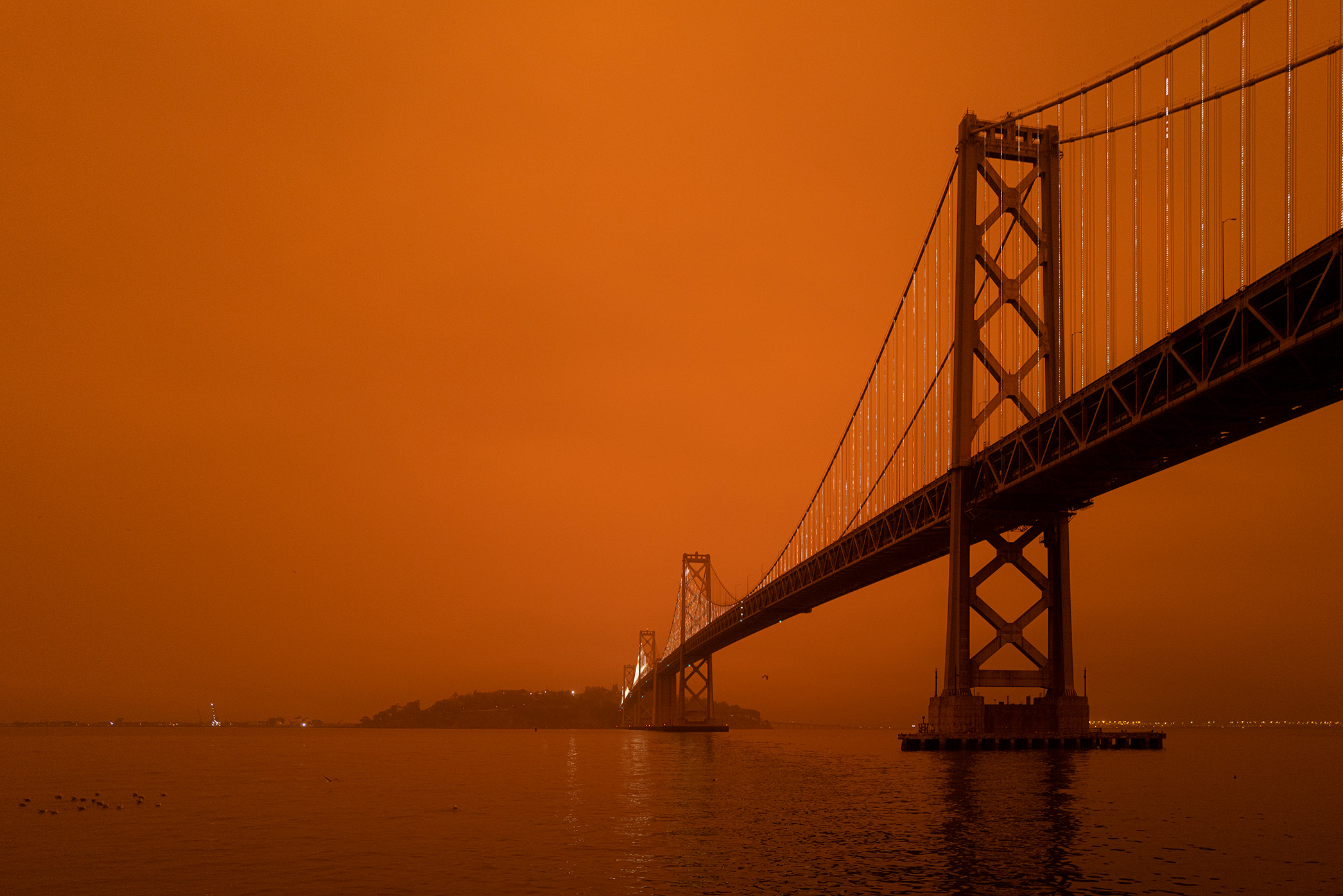Air Quality: Fire Weather
Investigating conditions that lead to wildfires, smoke, air quality impacts, and their aftermath.

Afternoon skies became orange in San Francisco during Sept 2020 as wildfires surged. The 2020 season was a record-setting one for the state of California and the United States. Image credit: Christopher Michel
Wildfires are not only dangerous, but also increasing in severity and prevalence, particularly on the west coast of the US. NOAA has a number of research activities underway to better predict, respond and recover to the increasing threat of wildfires.
As the nation’s leading weather and climate science agency, NOAA provides critical outlooks, forecasts and early warning products, monitoring temperature, precipitation and soil moisture across the nation. ARL is partnered with a number of laboratories across NOAA for wildfire projects in the next few years.
Short-Range Fire Weather. NOAA’s next generation numerical weather prediction (NWP) model RRFS Rapid-Refresh Forecasting System will replace the current HRRR-Smoke system in the near future. This upgrade will provide more accurate smoke and dust predictions and improve visibility, ceiling, and weather forecasts. ARL will partner with NOAA’s Global Systems Lab (GSL) and Environmental Modeling Center (EMC) to improve the delivery of real-time fire weather, smoke and air quality modeling and aerosol data assimilation. The key benefits will be improved forecast accuracy of weather and visibility, smoke and dust transport, air quality, and conditions for fires to start and/or propagate, namely fire weather.
The project will use RRFS-Smoke for real-time fire weather, smoke modeling and aerosol data assimilation. The RRFS-smoke tool will be transitioned with new algorithms and tools to forecast emissions and smoke for the new RRFS North American domain at 3 km resolution. The ARL developed evaluation and analysis system (MELODIES-MONET) will be assessed for possible use in the wildfire testbed.
Air Quality Alerts. Public air quality messaging during wildfire season will also be improved. A separate project will accelerate the development and transition to operations of NWS forecasting capability for impacts of wildfires on air quality. The current NWS capabilities will be accelerated to improve predictions of the impact of wildfires on air quality including fine particulate matter (PM2.5) and ozone for public dissemination and health alerts. The key benefits will be not only improved information on air quality hazards but also improved accuracy and resolution of predictions. NOAA’s NWS Environmental Modeling Center, will work with OAR Laboratories (including ARL, GSL, CSL and PSL) to support improved decision making for fire weather hazards, which disproportionately impact underserved and vulnerable communities.

